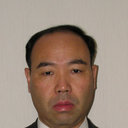Cytotoxic Components Against Human Oral Squamous Cell Carcinoma Isolated from Andrographis paniculata.
Słowa kluczowe
Abstrakcyjny
The 5-year survival rate of patients with oral cancer has remained approximately 50% during the past 30 years, possibly due to the poor tumor selectivity of conventional anticancer drugs. This prompted us to search for new candidates for anticancer drugs that have higher cytotoxicity and tumor selectivity.
Dried leaves of Andrographis paniculata were supplied from a market in Shanghai. The methanolic fraction of A. paniculata was further fractionated to identify cytotoxic principles by spectroscopic analysis and comparison with literature values. Viable cell number was determined by the 3-[4,5-dimethylthiazol-2-yl]-2,5-diphenyltetrazolium bromide method, and tumor specificity was calculated by relative cytotoxicity against oral squamous cell carcinoma cell lines compared to that against normal oral cells. Apoptosis induction was detected by cleaved poly (ADP-ribose) polymerase and caspase-3 on western blot analysis.
Major cytotoxicity in the methanol extract of a leaf of A. paniculata was recovered by partitioning with EtOAc, followed by silica gel chromatography. Further purification with reversed-phase high-performance liquid chromatography led to isolation of four known cytotoxic compounds, 14-deoxyandrographolide, andrographolide, neoandrographolide and deoxyandrographiside. Among them, andrographolide had the greatest cytotoxicity and tumor specificity, also inducing caspase-3 activation of HSC-2 oral squamous cell carcinoma cells.
The present study identified andrographolide as a major antitumor principle in the methanolic extract of leaves of A. paniculata.


